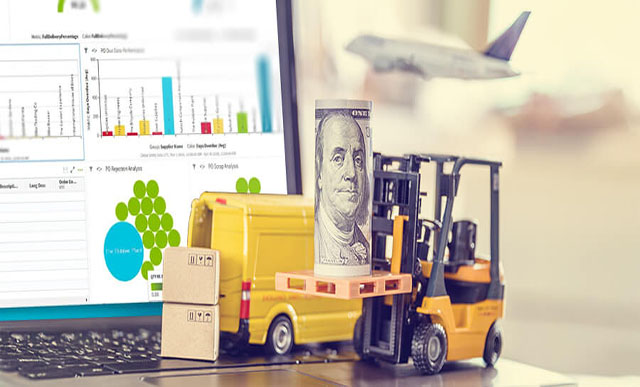Practically every element of a business can profit from scrutiny
BI&A can enable a Midas touch in terms of squeezing every drop of efficiency and profitability out of customer intelligence and CRM, ERP, and the better management of existing and future workforces. Sometimes the challenge is working out which area, problem or question to direct it to.
At its core, business intelligence is about transforming raw data into meaningful metrics that can provide a much needed edge in today’s fiercely competitive business environment. One of the most visible benefits of BI software integrated in to an ERP system is the benefit of real-time business information to aid short and long term decision making. However, BlackLine’s vice president of EMEA, Andy Bottrill notes that while many enterprises prioritise this approach for customer-centric applications they can fail to realise the potential it unlocks for back-office functions such as finance.
“With the right systems in place, finance and accounting teams can provide unprecedented value to the larger business. Rising transactional volumes, growing regulatory complexity and headcount constraints often mean that accountants are overcommitted to ‘closing the books’ when they also need to be delivering real-time financial intelligence. Embedding automation and BI software into day-to-day activities within the finance department, however, frees up time and resources for higher-value strategic tasks including major ERP upgrade initiatives,” said Bottrill.
“Enterprise resource planning (ERP) systems can be an indispensable tool, helping you to plan, budget, predict, and report on an organisation’s results. However, no ERP system can do it all. That’s why the best vendor software is designed to help plug functionality gaps and complement customers’ ERP,” he said.
Data is only one element of the final equation
When choosing a BI&A system it is important to identify what you need and want the system to do for your business. “Today, data is accumulated from a wide variety of sources, and it’s becoming increasingly difficult to manage this growing wealth of information—let alone use it. With decision-making so pivotal to driving business growth, this information overload represents a worrying development. Achieving full visibility of operations across a business, therefore, is key to maximising decision-making capabilities. While no one person can have direct visibility of everything that is going on in a company, business intelligence technologies—including ERP systems and manufacturing execution software (MES) – should be used to provide these insights,” said Andy Coussins, senior vice president and head of sales at Epicor Software, a company that focusses on business intelligence, reporting and analytics particularly for the manufacturing and distribution sectors.
He also advised creating a central collection and access point for business data is a crucial element. went on to say that “solutions like ERP and MES also make it possible to integrate data across the entire product life cycle and give everyone – from cLevel executives to those working on the manufacturing floor – access to actionable, information and insights in real-time. Having a filtered view of all this detail will enable decisions to be based on relevant, accurate and reliable data.”
Forecasting, fraud, and football
“When we talk about BI and analytics what we are really talking about is how companies make use of their data,” said Debbie Green, vice president of applications at Oracle UK. “Over the last few years companies have been managing ever greater amounts of data, and now when I sit down with customers the conversation is how they make the most of this data rather than how they simply manage it. BI and analytics is key in doing this as it helps them make sense of the huge swathes of data and turn it into meaningful insights that help them to make informed and intelligent decisions about the future of their organisation.
“If we look at the CFO function as an example, by integrating BI and analytics into their finance function it allows them to easily understand fiscal forecasts, expenditure or gaps in their supply chain. By having this information at their fingertips the CFO can focus on the strategy to resolve a problem, or drive further operational streamlining, rather than having to make sense of the numbers as this has been done automatically,” she said.
Logically, BI&A can only work with the data that it has to calculate from. Some of that data can derive from outdated strategies reaching back for decades so it is wise to double-check evidential outcomes against data sources, collection, filing histories and timestamping. Thankfully, as machine learning encroaches further into data handling and analysis more current system recommendations are being generated.
Of course historic information can hold enormous value for moving forwards. The NHSBSA (National Health Business Services Authority) provides critical central services to NHS organisations, NHS contractors, patients and the public. The organisation identified clear first objectives: to better understand the patient journey, find out how customers intereact with NHSBSA, and identify errors and misuse of services. Through an initiative called DALL (Data Analytics Learning Laboratory) NHSBSA was able to access insight which has helped to create some £581 million in savings that can be reinvested in to patient care.
The results of the initial data analysis, aided by an end-to-end suite of Oracle services, uncovered around £100m in potential savings in just the first few months. It also highlighted over-claims from organisations such as pharmacists and dental practices, and instances of resource wastage including the over prescribing of medication. Not only has the system been able to collect and make sense of vast amounts of historic data from several different sources, the evidence of deeper operational insight has prompted a more data centric mindset across the organisation.




